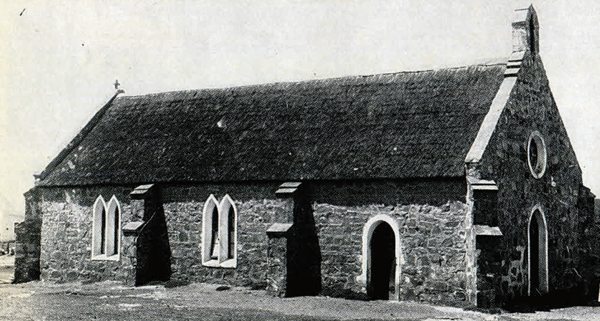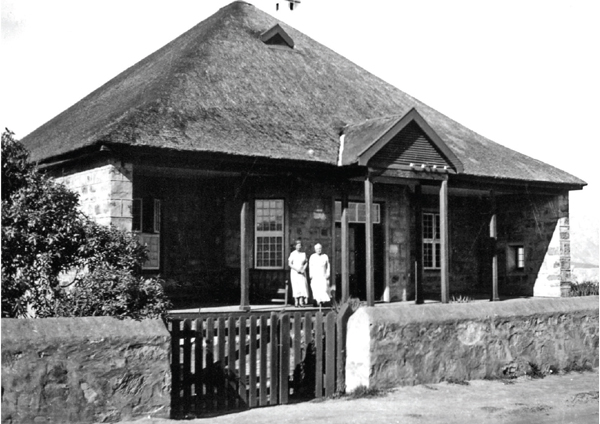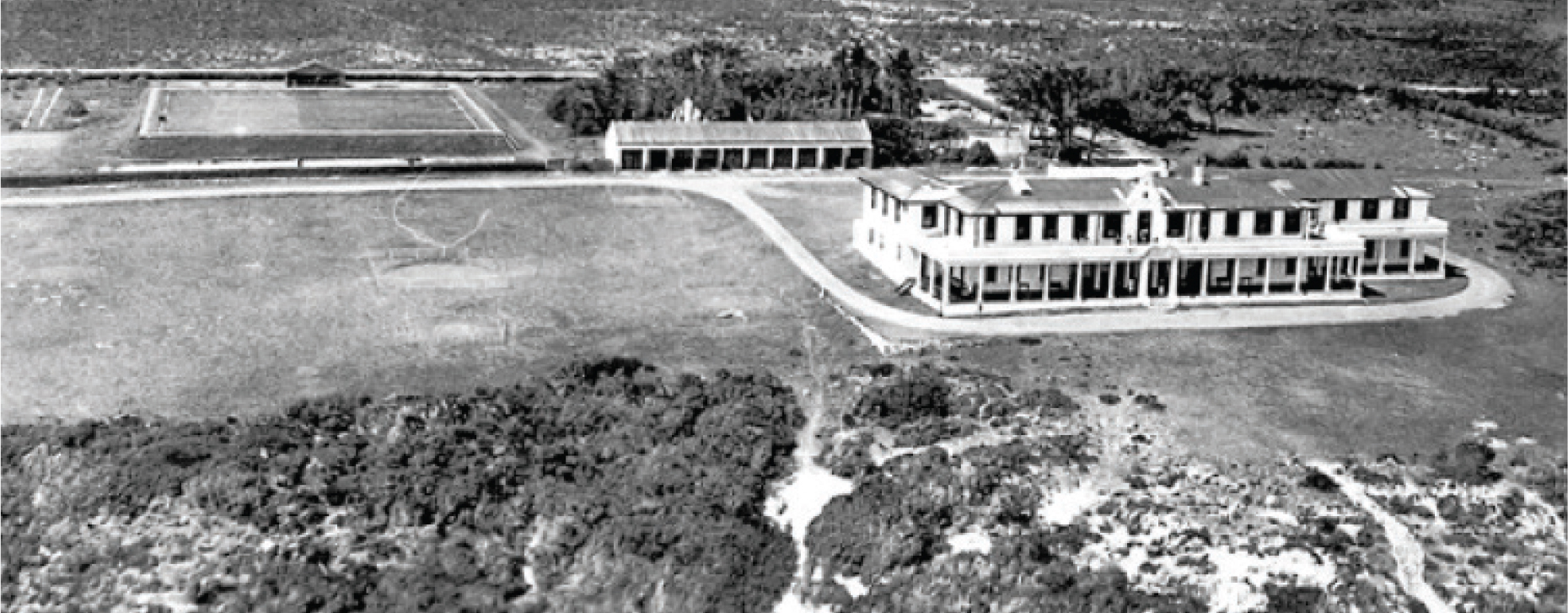
Preserving the cemetery ‘behind the koppie’
January 19, 2022
THE LIGHTER SIDE OF THE HERMANUS HOTELS
January 19, 2022T housands of visitors, holidaymakers and owners of family holiday homes will be travelling to destination Hermanus this December. Their trips may be short and by car only, say from Cape Town; or they may be longer, involving air travel from other parts of the country and, to a lesser degree since Covid, overseas.
Hermanus has always been a destination. In 1855, the first European settlers travelled a few kilometres from Hawston, when it was known as Herries Bay. And visitors and immigrants kept coming through the 19th and 20th centuries – and still do, today. So, in preparation for the influx, here are three accounts of travel to Hermanus in days gone by. The first story dates from about 1890; the second trip we know was undertaken in the year 1900 as reference is made to the travel restrictions associated with the Anglo-Boer War; and the third was made 100 years ago, in 1922.
The Pienaar Family (1890)
In her Hermanus Stories I (2001), S J du Toit has recorded a journey made by the Pienaar family from Somerset West to their holiday camp in Voëlklip:
Ds. Pienaar and his family travelled by ox-wagon, and taking the seaside route past Rooiels and Kleinmond, arrived at Voëlklip (then known as Mosselrivier).
As the wagon was loaded with provisions and camping equipment, most of the children had to walk all the way, next to or behind the wagon. There were no proper bridges across the Steenbras or Palmiet Rivers, and crossing them often posed a hardship. During years of heavy summer rains in the area, the Steenbras River was quite deep for the wagon and oxen to ford, but they managed to get through. At one time, Mrs Pienaar had to wade through the river carrying her baby on her shoulders when, much to her dismay, her baby’s dummy was washed away seaward!
Today, it takes motorists less than an hour to cover the distance between Somerset West and Hermanus. By ox-wagon, in those days, it was a threeday journey. Their first outspan and overnight was at the Steenbras River and the next night at the Palmiet River. It was pretty late on the third day when they arrived at Mossel River. The camp was pitched near the present Kammabaai, and freshwater could be collected from the Mossel River. Huge milkwood trees gave protection, and there was a natural kraal where the oxen could sleep at night. They grazed in lush grass in the clearing between the trees.
The families making this trip, or the alternative route over the Hottentot Hollands Mountains and then via Grabouw and Bot River would holiday for 6 to 8 weeks. This was presumably time enough to generate the energy to face the return journey.
The Gearing Family (1900)
The Gearing family came to South Africa in the mid-19th century and settled in Cape Town. The eldest son of the family, Sydney Gearing, qualified as an engineer and set up a prosperous iron and steel manufacturing company in the city. Its most famous product was the highly lucrative windpump, often incorrectly referred to as a windmill but used all over the country to pump underground water to the surface where it could be stored for agricultural and domestic use.
Sydney invented and patented the fan-shaped tail portion that kept the sails of the windpump facing into the wind at all times and was sold to farmers throughout South Africa. He also invented the braking mechanism that shut down the pump’s blades in high winds and prevented damage to the entire machine.
For some years, Sydney was elected Mayor of Rondebosch, which was then a local government of its own, separate from Cape Town. As an industrialist and Mayor, Sydney was undoubtedly friendly with William Hoy, who was not then knighted and was working at the Cape Government Railways. Hoy was involved in building new railway stations as rail links were created in the interior, and every station needed a windpump. Probably, Sydney first heard of Hermanus from William Hoy’s fishing trips to the little town of Hermanus.
In the 1890s, the Gearings built a cottage in Marine Drive in Hermanus and called it The Anchorage. The cottage still stands on the corner opposite the new parking area at Gearing’s Point, named after the family. The Gearing family visited Hermanus every year, and this story of one of their trips relates to the year 1900. We know this, as Gearing had to get special permission from the military authorities to travel out of Cape Town in the middle of the Anglo-Boer War. The story appears in Arderne Tredgold’s book, Village of the Seas:
(Sydney) Gearing’s daughter, Mrs O M Grant-Dalton, described the journey they made to Hermanus in 1900. Mrs Gearing had to make preparations for a family of eight. “That was a real undertaking for my mother. She had to think not only of clothes for a family of eight but also food – we took most of our groceries with us (the shops were primitive in Hermanus then) and a large tin of Australian butter that was supposed to last one month. How far off Hermanus seemed then, a trek of two whole days.
We left Rondebosch before eight o’clock in the morning and reached Sir Lowry’s Pass by train about 1 p.m.” This station was the terminus. There they all packed into a covered wagon with eight mules belonging to a Mr Erwee. Some of the passengers walked part of the way up the pass to help the mules. “We usually made camp at Grabouw on the grass by the Palmiet River for the night. We children slept under the wagon and the grown-ups inside the wagon tent. There was a canvas manger for the mules along the ‘disselboom’, and they were tethered there. We went to sleep to the sound of munching. In the middle of the night, I woke everyone up by shouting, ‘Mother, Mother, the mules are eating my hair!'”
When the Bot River was too full to be crossed at the usual drift, travellers had to make a long detour which brought them round to a little shop on the Hermanus side of the drift. They outspanned for lunch between Afdak and Hawston, and the last part of the journey seemed very long until they reached Onrus and caught the first whiff of the famous sea air of Hermanus. They travelled on and “at last we rumbled down the Main Street of the little fishing village in the afternoon (of the second day), the wagon wheels bouncing over the rocks especially as we turned through the rickety gate and over the grass to arrive with a flourish in front of the cottage”. The cottage stood on the corner of Marine Drive and Harbour Road, across the way from the house under the cypress tree.
In the final sentence, the house referred to was built initially by Louis (Swede) Wessels in 1860 as a boat repair and building business. Later it would become The Cypress Tea Gardens and today is the Burgundy Restaurant.
The Napier Family (1922)
Nancy Okes (born Napier) wrote an account of a more recent journey to Hermanus and tells of the family’s annual trip from Cape Town to Hermanus almost precisely 100 years ago, in 1922.
The writer contributed a chapter to the book Hermanus Stories III by S J du Toit (2007). The book can be bought at The Book Cottage in Station Square, Hermanus, and I recommend it to anyone interested in Hermanus history.
My father had a 1922 Buick Tourer, top speed 25 miles per hour. She was a long fawn affair with a canvas hood and could seat at least eight passengers. A running board, rubber-paved, ran along each side of the car, and onto these on each side, were fixed two spare wheels with a gallon can behind each, one for petrol and one for water. Behind the front seat was a picnic hamper.
Father was intensely proud of his car and called her ‘The Thoroughbred’ as he was keen on horse racing, but my mother, who did not hold with betting, named her ‘Bonny Jess’. Behind the back seat (which could be angled forward) was a cavern for storing some mica shields, which one press-studded onto the wooden frame and side-struts of the roof if it rained. These hermetically sealed the interior of the vehicle to the discomfort of the occupants, and were soon abandoned. Their place was taken by karosses under which we snuggled in case of inclement weather. For the hazardous and dusty journey to Hermanus from Cape Town, my father wore a grey linen motor coat, and my mother would don a motoring veil over her hat. It took at least three and a half hours to Hermanus. Our route lay along Darling Street, District Six on our right, past the early morning market, Salt River and Bellville where there was a Greek shop where we could top up with bananas, chewing gum and sugar sticks.
The main road at Somerset West seemed to us like a perfumed rose garden. Great houses in magnificent gardens stood well back from the road, and their roses came down to the pavements. Ahead lay Sir Lowry’s Pass, a dirt road, narrow and steep. Bonny Jess started off like a racehorse, but sadly her pace became slower and even slower as she gasped and lurched uphill. But she made it, only boiling when she limped onto the great gravel circle at the summit where she was allowed to recover her cool, her bonnet open to catch any breeze. We children ran amongst the proteas and other fynbos which crowned the top of the pass.
The road now ran downhill, into the hamlet of Grabouw where a few shops lined the main road. At the far end we were brought to a halt by the brown Palmiet River, wide and slow-moving. There was no bridge. My brother removed his sandals and got out. It was his task to act as our guide. If the water rose to his armpits, Bonny Jess could not get through. In low gear, we followed his white legs. My mother protested. My father growled, “Lad did not drown last year, no reason why he should drown this year.” The water rose to his waist. Then he was out, waving us on, and Bonny Jess followed.
Houwhoek Pass was then a narrow dirt road down in the bowels of the earth, hugging the railway line. Great rocks rose on each side, dwarfing us all. There were sharp bends where the sun never shone, reducing us to silence. Then we were out, trundling back into sunlight; black and white cows dotted green pastures, and there were small silos with thatched pointed roofs. And on to the coloured township (now Mount Pleasant). Already we could smell the sea and the thatch and fish. The main road of Hermanus held a few houses, and then we were round the corner where there was the Victoria Hotel, with its pub door open to the pavement, and we parked in the village square, cobbled and uncluttered. There were a few thatched cottages opening onto it, and chickens, dogs and children ran around. My father repaired to the hotel while my mother bought mebos (dried apricot fruit roll) and koeksisters (a kind of plaited dough deep-fried in oil, then dipped in syrup) from Ouma Sienie van der Merwe, who resided in one of the cottages. We ran down to the harbour where fishermen were mending their nets or unloading their harvest, while their womenfolk worked nearby at long cement tables, cutting up fish. All had one greeting for us “En hoe gaan dinge in die Kaap?” (“And how are things at the Cape?”)
The klaxon call from Bonny Jess sent us hurtling uphill, and then we were off through the sleepy, thatched village. Over the Mossel River and past the only house in those parts, a great thatched affair with pillars, in a tree’d garden (it is still there). A mile or two further on, we splashed through a stream, and then we were at the Riviera Hotel. It lay along the shore, looking out to Walker Bay – a long red-roofed sanctuary backed by a grassy “werf” (yard). On the left was the holy-of-holies, the bowling green, and beyond it lay a row of twelve garages.
Bonny Jess, knowing her place, stopped before No. 12, and we, knowing ours, hosed her down with a hose which was kept handy for the purpose. Then we went to pay our respects to our host and hostess. The first time I was conscious of Mrs Luyt was in about 1924. She came down the stairs to greet us. The light from the tall window on the half landing illuminated her hair and her figure, as she stood smiling down at us. She seemed empowered in flowers and light. Even my irreverent siblings stood motionless, their mouths agape.
Sydney Gearing later retired to Hermanus and served as Mayor from 1915 to 1919
The Gearing’s cottage The Anchorage in the 1930s, unchanged since the date of the trip described and substantially the same today in Marine Drive on the bend of the road at the entrance to the parking area. ABOVE: The Riviera Hotel in the 1920s, with the garages and the bowling green clearly visible as described in Nancy Okes’ (born Napier) account of her family’s annual trip from Cape Town to Hermanus almost precisely 100 years ago. PHOTOS: Old Harbour Museum Trus


